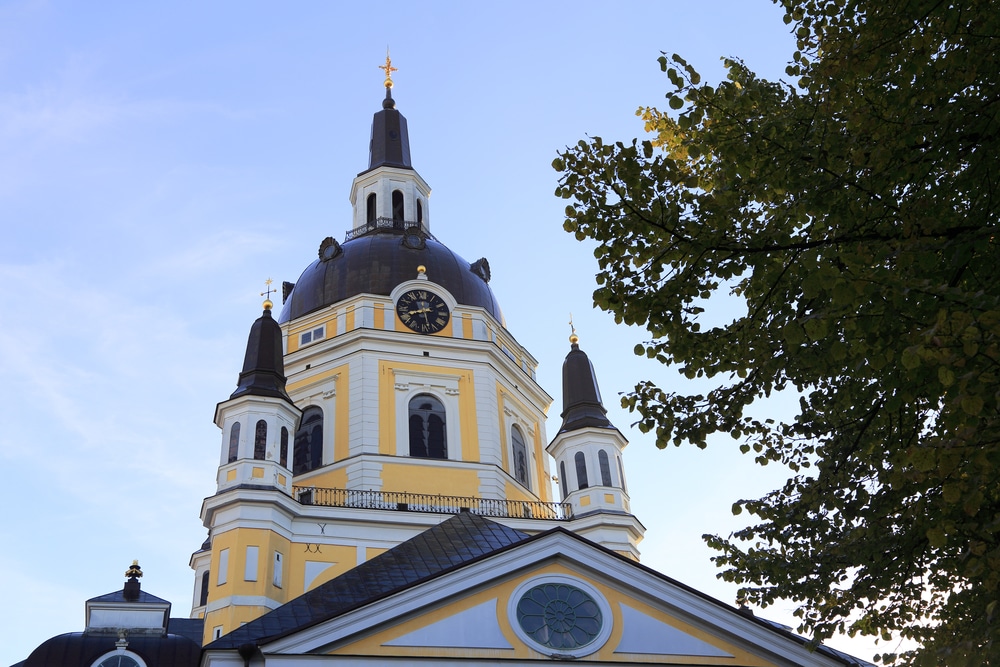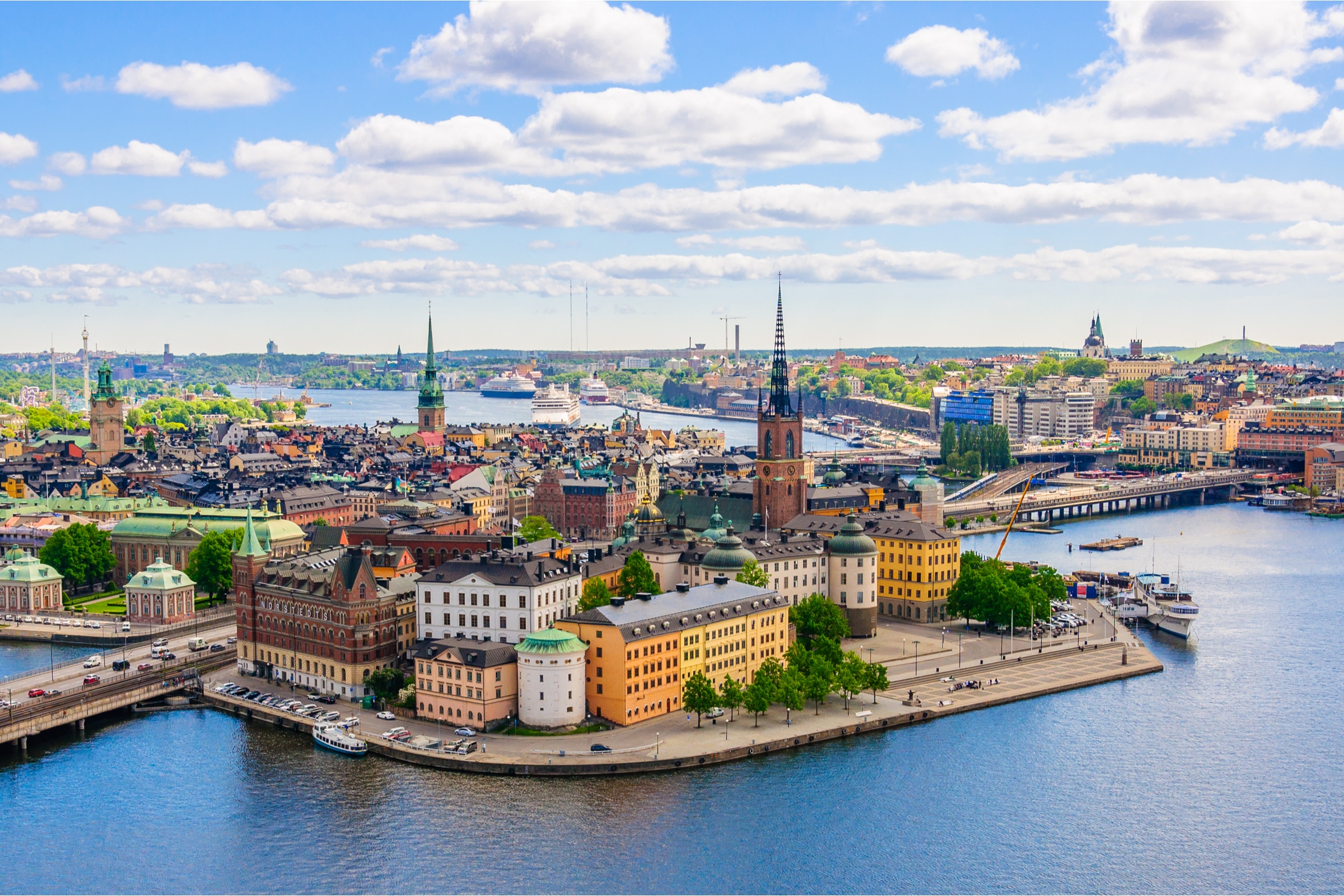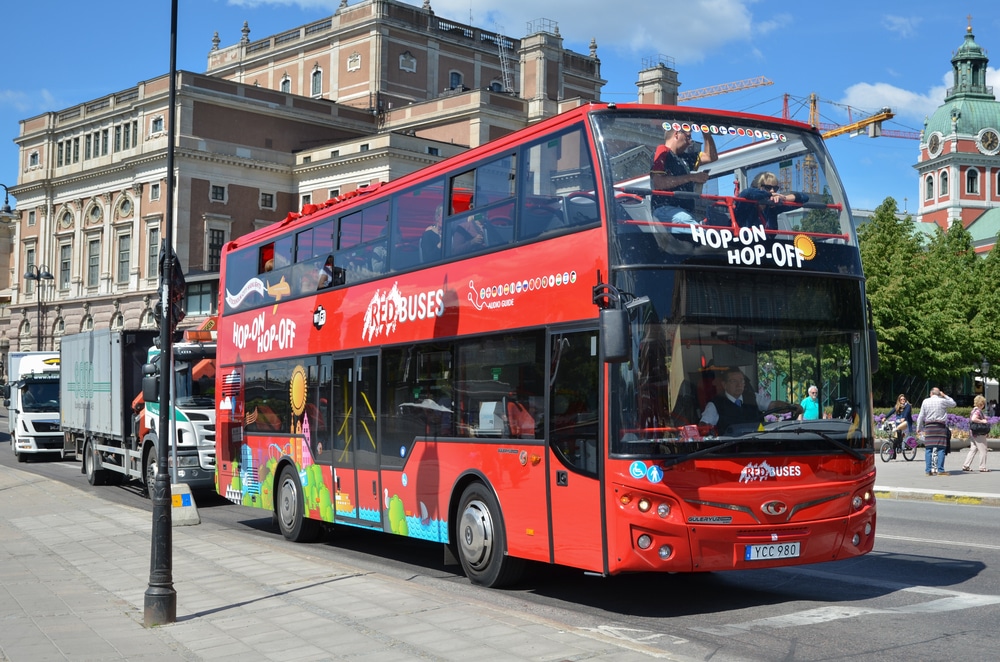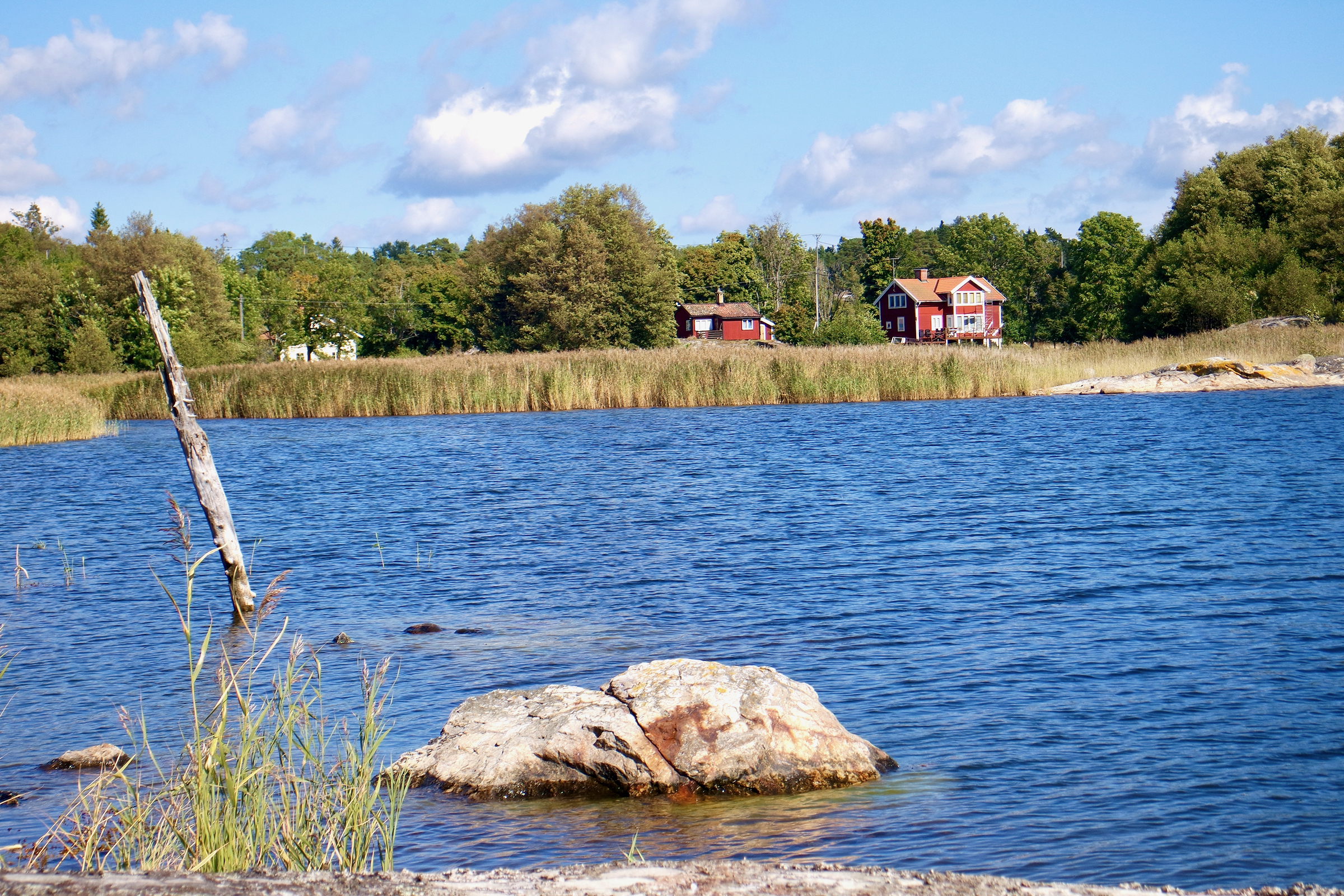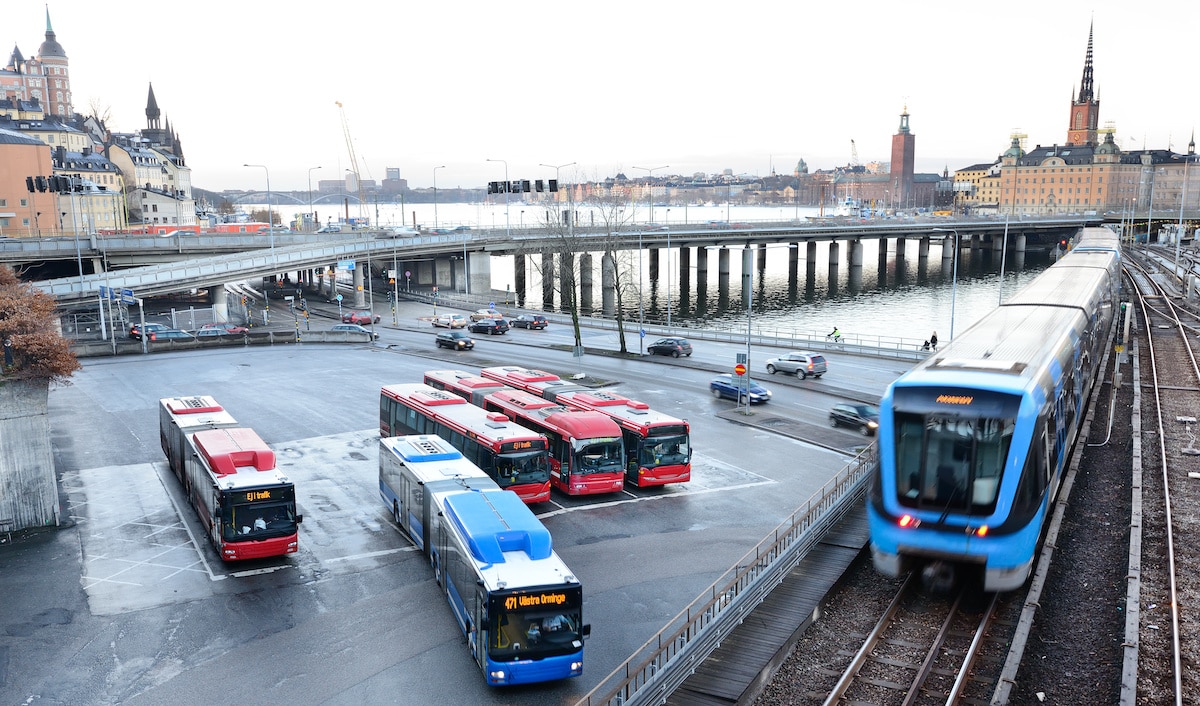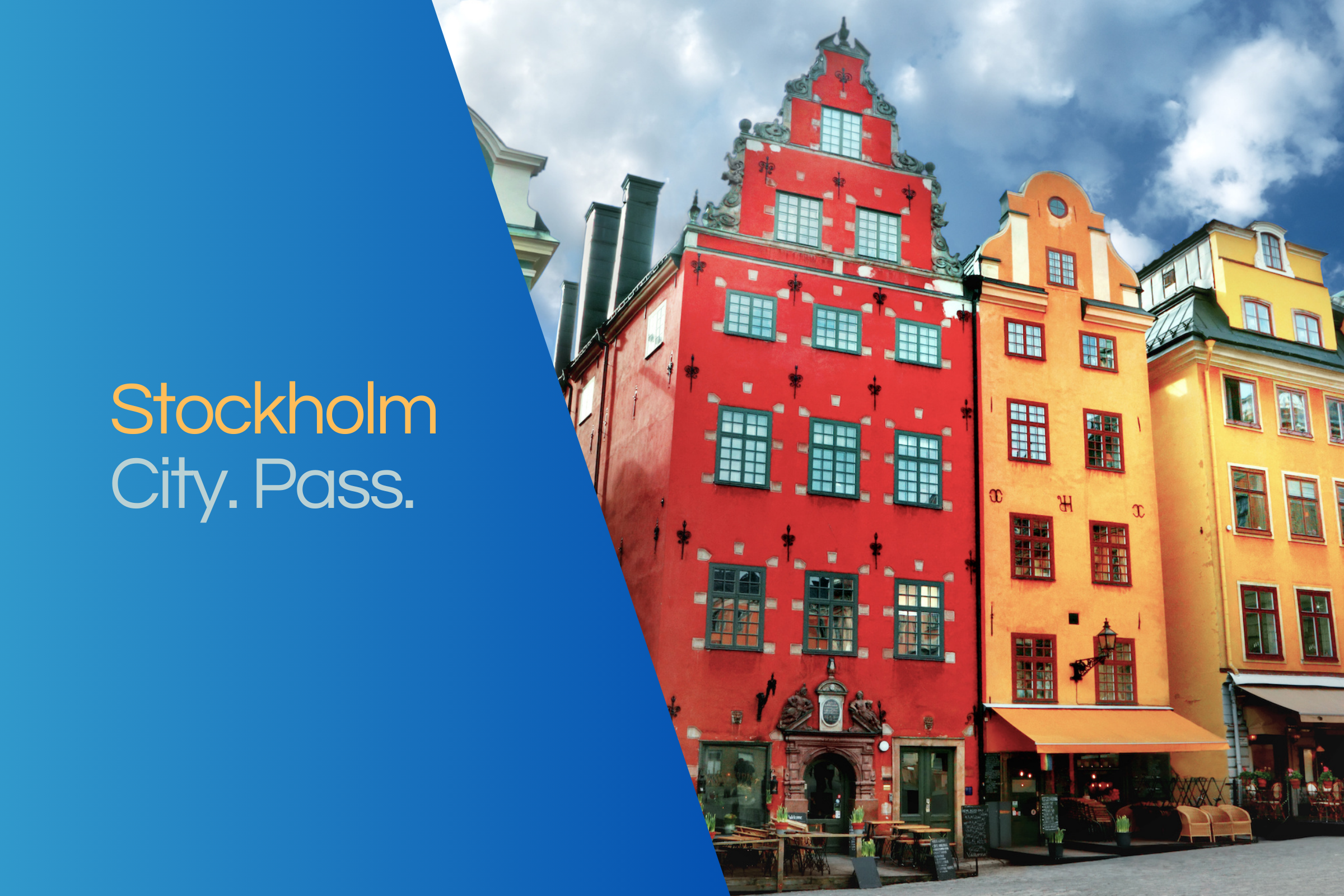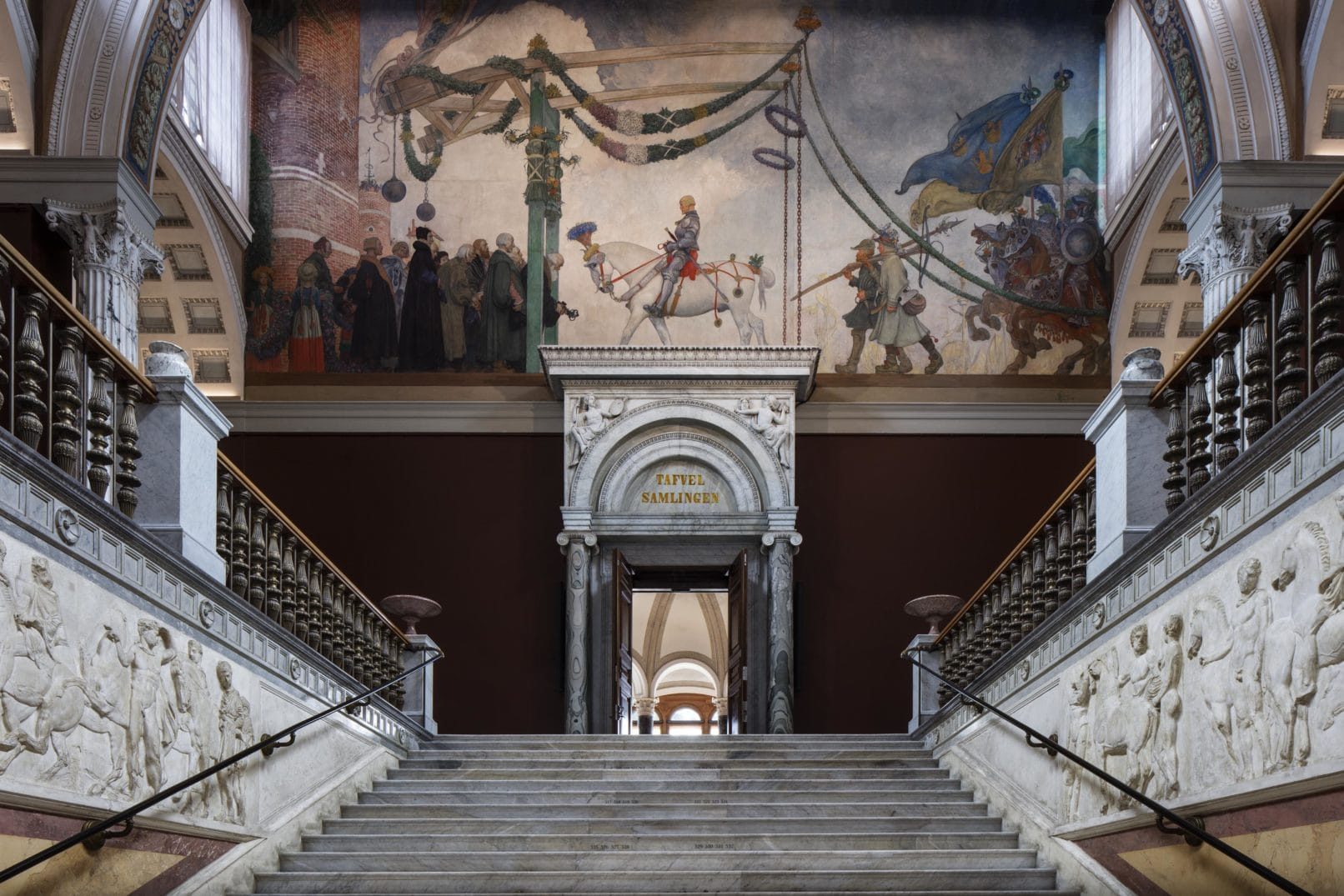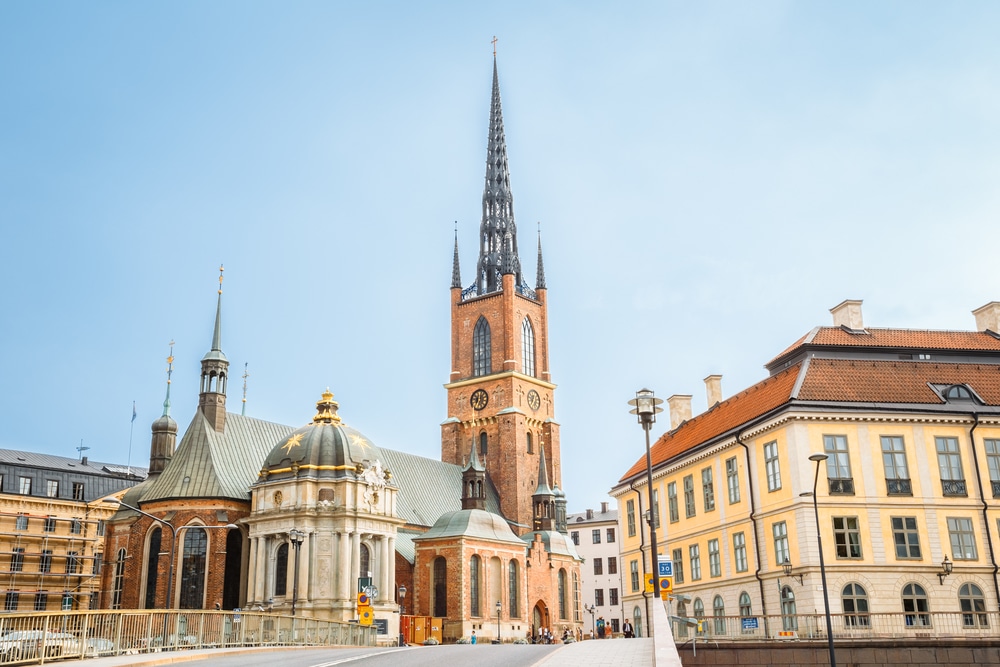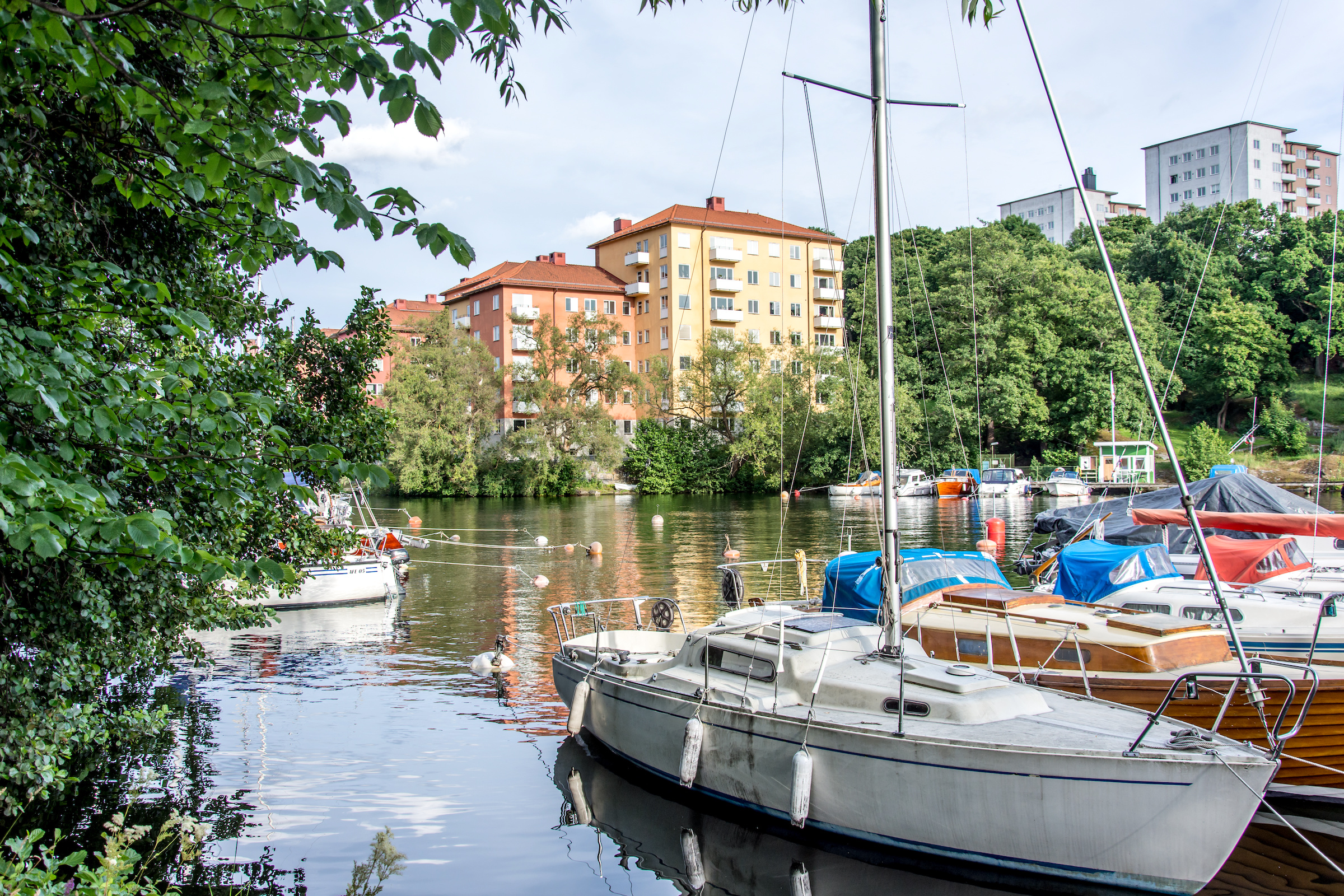One of Stockholm's most beautiful churches is St. Catherine's Church (katarina kyrka) in the Södermalm district, visible from afar. It was built in the 17th century, when the Swedish capital began to expand and the inhabitants of the new districts formed new communities. The magnificent Baroque building with a ground plan in the shape of a Greek cross is the first central church on Swedish soil. The church was almost completely destroyed by fires twice; after the first fire it received the present eight-sided bell tower.
Katarina Kyrka
The beginnings of St. Catherine's Church
In 1654 the population in the district of Södermalm had grown so much that a new church was needed (in addition to the older Maria Magdalena Church). The new building was to replace the small Sture Chapel, which the Swedish King John III had built in 1580 on the very spot where 60 years earlier the bodies of the nobles murdered in the Stockholm bloodbath had been burned.
By now Sweden was a great power and the then reigning King Charles X Gustav had great plans for the district of Södermalm. The new church, named after his mother Katharina, was to be a monumental building for the time.
The construction of the church took several decades. According to the plans of the architect and later mayor of Stockholm, Jean de la Vallée, work began in 1656, but was not completed until 1695. Jean de la Vallée's grave is located in the southern cross arm of the church.
The first fire in 1723
When the northeastern part of Stockholm's Södermalm district was destroyed by fire in 1723, Katarina kyrka also burned. The tower and large parts of the roof collapsed, and little more than the outer walls remained. Reconstruction was carried out under the architect Göran Adelcrantz, who was experienced in church buildings. The original low central tower was replaced by the current, much more powerful one, and the church was given its characteristic shape, which still dominates the silhouette of Södermalm today. With his designs for the altarpiece and pulpit, Adelcrantz's son Carl Fredrik, who was to become one of the most important contemporary architects, was involved in the interior design. (The extent to which these drawings were actually produced by the son alone, however, is disputed).
The second fire in 1990
In 1990 the church burned again; some art treasures could be saved, but much burned. Only due to a strong interest of the population and the media it was decided to rebuild Katarina kyrka. Under the architect Ove Hidemark, the exterior was reconstructed, but the interior was adapted to modern requirements using traditional materials and building techniques.
The destroyed church clocks from the beginning of the 19th century were replaced by replicas, which are electrically operated and clocked by GPS from the Frankfurt atomic clock. The altar and organ front are copies of the baroque originals. What was not destroyed by the fire (the church silver, a smaller crucifix and other pieces) is partly presented in showcases, partly still in use. The bells were newly cast in Ystad in 1991/92 according to their historical models and partly using the original material. Between the two wings of the double staircase named after Charles XII, under the south portal of the church, stands the old church bell of 1723, rescued in the fire of 1990. A large proportion of the cost of the reconstruction was met by donations.
The church building
The cross arms of the church building are of equal length; the entrance is on the western side. Small pavilions stand in the inner corners of the wings. A square base was erected above the cross building, which in turn supports the eight-sided tower of the church. The final element is a mighty, copper-roofed dome construction with a diameter of almost 23 metres. To the south, the building has a basement due to the slope, an open staircase named after King Charles XII leads to the entrance located on this side. The façade is plastered in yellow, all the decorative elements (made of plaster as well as sandstone) are coloured in light grey.
The cemetery of St. Catherine's Church
The church stands on a cemetery area of about 160 by 160 metres, the trees of which grew successfully only after a layer of earth was laboriously applied. Several famous people are buried in the cemetery, such as the politician Anna Lindh or the poet Per Anders Fogelström, whose novel Sommaren med Monika (The Time with Monika) was the model for Ingmar Bergman's 1953 film of the same name.
